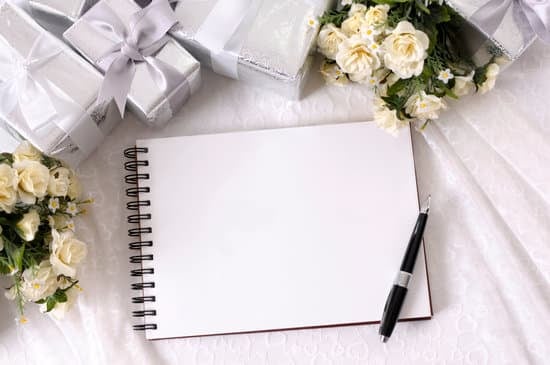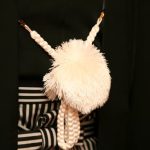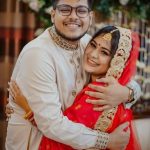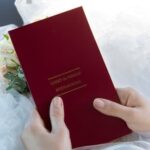A picture of a wedding dress symbolizes the beauty, romance, and cultural significance of one of the most important garments a woman will ever wear. From ancient traditions to modern trends, the wedding dress holds a special place in history and society. Exploring the history of the wedding dress reveals fascinating insights into fashion, customs, and societal norms throughout the ages.
Throughout history, wedding dress styles have evolved significantly, reflecting changes in culture, technology, and societal norms. From elaborate gowns to sleek silhouettes, the evolution of wedding dress styles over the years is a reflection of changing tastes and trends. Understanding this evolution allows us to appreciate how fashion has been influenced by different eras and cultural influences.
In different cultures around the world, the wedding dress holds unique symbolism and significance. From vibrant colors to intricate designs, each culture has its own traditions when it comes to bridal attire. The meaning behind these customs sheds light on how diverse societies celebrate love and marriage through fashion. By exploring these traditions, we gain a deeper understanding of the universal importance of weddings and their attire.
Evolution of Wedding Dress Styles Over the Years
Wedding dresses have evolved significantly over the years, reflecting changes in fashion trends, cultural influences, and individual preferences. From the simple and modest dresses of the past to the extravagant and intricate designs of today, the evolution of wedding dress styles is truly a fascinating journey. Let’s take a closer look at how wedding dress styles have transformed over the years:
- 1800s: During the 19th century, wedding dresses were typically made in darker colors like black or gray, with only wealthy brides opting for white gowns. These dresses featured high collars, long sleeves, and full skirts to exude a sense of modesty and purity.
- 1920s-1930s: The Roaring Twenties brought about a shift in bridal fashion with flapper-style wedding dresses that were shorter in length and embellished with beads and sequins. As women embraced more liberated lifestyles, wedding dresses reflected this newfound freedom with relaxed silhouettes.
- 1950s-1960s: The post-war era saw a return to traditional bridal styles with full-skirted ball gowns inspired by fairy tales. Dresses were adorned with lace, embroidery, and intricate detailing, embodying a sense of romance and femininity.
As we move into the modern era, wedding dress styles continue to evolve with each passing year. Brides today have a plethora of options to choose from – whether it be sleek and minimalist silhouettes or bohemian-inspired designs. The variety in styles caters to different tastes and preferences, allowing each bride to find her perfect gown that reflects her individuality.
From traditional ball gowns to chic sheath dresses, the evolution of wedding dress styles over the years showcases not only changing fashion trends but also societal shifts and cultural influences. As bridal designers continue to push boundaries and experiment with new materials and techniques, we can expect even more exciting developments in wedding dress styles in the years to come.
Whether you opt for a timeless classic or a modern statement piece, one thing remains certain – your wedding dress will always be a picture-perfect reflection of your personal style on your big day.
The Significance of a Wedding Dress in Different Cultures
The significance of a wedding dress transcends mere fashion in various cultures around the world. Different societies have unique traditions and symbolism attached to the wedding dress, making it a vital aspect of the marriage ceremony. Let’s delve into some of the fascinating cultural meanings behind wedding dresses:
- In Western cultures, white is traditionally associated with purity and innocence, which is why brides often opt for white or ivory wedding gowns. This tradition dates back to Queen Victoria’s wedding in 1840 when she wore a white gown, sparking a trend that continues to this day.
- Conversely, in many Asian cultures such as China and India, red is the color of choice for brides. Red symbolizes prosperity, luck, and happiness in these societies and is believed to ward off evil spirits. Intricately embroidered red wedding dresses are commonly worn to symbolize joy and good fortune.
- In some African cultures, brightly colored fabrics, elaborate beadwork, and intricate patterns are incorporated into bridal attire. These designs not only reflect the richness of their culture but also signify the celebration of love and unity within the community.
The wedding dress serves as more than just a garment; it embodies cultural heritage, beliefs, and traditions that have been passed down through generations. Its significance lies not only in its beauty but also in its ability to connect individuals to their roots and unite families in celebration.
Celebrating diversity in bridal attire allows us to appreciate the rich tapestry of customs that make each culture unique. Whether adorned in intricately embroidered silk or flowing layers of tulle, every bride’s choice of wedding dress tells a story that extends far beyond aesthetics – it reflects centuries-old traditions and values that continue to shape our understanding of love and marriage.
How to Choose the Perfect Wedding Dress for Your Body Type
When it comes to choosing the perfect wedding dress for your body type, there are a few key factors to consider that will help you look and feel your best on your special day. One of the most important things to keep in mind is finding a dress that accentuates your best features and minimizes any areas you may not be as comfortable with.
For example, if you have a pear-shaped body, a ball gown or A-line style dress can help balance out your proportions by highlighting your waist and flowing out over your hips.
Another essential aspect to consider is the neckline of the dress. Different necklines can complement different body types, so it’s important to find one that flatters both your figure and personal style.
For instance, if you have a fuller bust, a V-neck or sweetheart neckline can help elongate your upper body and create a more balanced silhouette. On the other hand, if you have broad shoulders, consider opting for a halter or off-the-shoulder style to draw attention away from this area.
In addition to silhouette and neckline, it’s crucial to think about fabric and embellishments when choosing a wedding dress that suits your body type. Lighter fabrics like chiffon or organza are great choices for those looking to add volume without adding bulk, while heavier fabrics like satin or taffeta can provide structure and shape.
As for embellishments, beading or embroidery can draw the eye to certain areas of the body, so use them strategically to highlight your favorite features. Remember, the key is to choose a wedding dress that makes you feel confident and beautiful on your big day.
| Body Type | Flattering Wedding Dress Styles |
|---|---|
| Pear-shaped | Ball gown or A-line dresses |
| Fuller bust | V-neck or sweetheart neckline |
| Broad shoulders | Halter or off-the-shoulder styles |
A Visual Journey
Wedding dress trends have significantly evolved over the past decades, reflecting the changing times, societal norms, and fashion preferences. Taking a visual journey through the history of wedding dresses allows us to witness the stunning evolution of styles, fabrics, and silhouettes that have shaped the bridal industry. From modest and conservative gowns to bold and avant-garde designs, each era has brought its own unique flair to bridal fashion.
The Classic Elegance of the 1950s
The 1950s marked an era of classic elegance in wedding dress design. This decade was characterized by full skirts, cinched waists, and delicate lace detailing. The iconic ballgown silhouette popularized by designers like Christian Dior became synonymous with traditional bridal attire. Brides embraced feminine embellishments such as pearls, floral appliques, and illusion necklines, creating a timeless and romantic aesthetic that continues to inspire modern wedding dress trends.
The Bohemian Revolution of the 1970s
In contrast to the structured silhouettes of previous decades, the 1970s witnessed a bohemian revolution in wedding dress styles. Inspired by free-spirited movements and counterculture influences, brides gravitated towards flowy fabrics, relaxed silhouettes, and ethereal designs. Crochet lace, bell sleeves, and flower crowns became staples of bohemian bridal fashion during this era. The embrace of unconventional colors like ivory, champagne, and even earth tones added a whimsical touch to wedding ensembles.
The Modern Minimalism of the 2000s
As we entered the 21st century, wedding dress trends took a minimalist turn in response to contemporary aesthetics. Clean lines, sleek silhouettes, and understated elegance defined bridal fashion in the 2000s.
Designers focused on sophisticated details such as architectural draping, plunging necklines, and refined embellishments for a chic yet sophisticated look. The rise of celebrity weddings also influenced bridal fashion during this period, with iconic gowns worn by famous personalities setting new trends that would shape the industry for years to come.
Behind the Seams
Wedding dress designs are a harmonious blend of tradition, innovation, and artistry. Behind the seams of every stunning wedding dress is a talented designer who brings dreams to life. These designers carefully craft each gown with precision and attention to detail, ensuring that every bride feels like a vision on her special day.
The Creative Process
Designing a wedding dress is a creative journey that begins with inspiration. From sketching initial ideas to selecting fabrics and embellishments, wedding dress designers pour their passion into every step of the process. They work tirelessly to bring their vision to reality, often collaborating with skilled seamstresses and craftsmen to ensure the highest level of quality in every stitch.
Signature Styles
Each designer brings a unique perspective and style to their wedding dress collections. Some may be known for their romantic lace detailing, while others may specialize in sleek modern silhouettes. Whether it’s intricate beading, dramatic trains, or ethereal layers of tulle, these signature elements define the aesthetic of a designer’s creations. Brides-to-be often seek out specific designers whose style resonates with their own personal tastes and visions for their wedding day look.
The Legacy of Designers
Over the years, certain wedding dress designers have become legendary figures in the bridal fashion industry. Their innovative designs and impeccable craftsmanship have set new standards for excellence in wedding attire.
From Vera Wang’s iconic couture gowns to Oscar de la Renta’s timeless elegance, the legacy of these designers continues to inspire both brides and aspiring designers alike. The impact of these masterful creators can be seen in the evolution of bridal trends and the enduring beauty of a picture-perfect wedding dress.
The Influence of Celebrity Wedding Dresses on Bridal Fashion
Celebrities have always had a significant influence on fashion trends, including bridal wear. When a famous personality ties the knot, all eyes are on them, especially their choice of wedding dress. The impact of celebrity wedding dresses on bridal fashion is undeniable, as many brides-to-be look to these high-profile events for inspiration and ideas for their own big day.
One iconic example of a celebrity wedding dress that left a lasting impression on bridal fashion is the gown worn by Meghan Markle when she married Prince Harry in 2018. Her elegant and timeless Givenchy dress sparked a trend for minimalist and chic designs in the bridal industry. The bateau neckline and three-quarter sleeves of her dress became highly sought after by brides looking for a sophisticated and contemporary look.
Another celebrity whose wedding dress made waves in the fashion world is Princess Diana. In 1981, she walked down the aisle in a show-stopping gown designed by David and Elizabeth Emanuel, complete with an extravagant train that captured hearts around the globe. This fairytale-like dress with puffy sleeves and intricate lace details set the tone for romantic and opulent wedding dresses throughout the 1980s and ’90s.
From Grace Kelly’s timeless elegance to Kim Kardashian’s daring choices, celebrity wedding dresses continue to shape bridal fashion trends year after year. Whether it’s a classic ballgown or a modern silhouette, there’s no denying that these iconic looks leave a lasting impact on how brides choose their own picture-perfect wedding dress.
Saving Memories
Preserving a wedding dress is not just about keeping fabric safe; it’s about holding onto memories from one of the most important days of your life. A picture of a wedding dress captures the beauty and significance of that moment, but ensuring that the gown stays in pristine condition is crucial for future generations to enjoy.
To preserve a picture-perfect wedding dress, consider professional cleaning and preservation services. These experts know how to treat different fabrics and embellishments to maintain the quality of the dress.
When it comes to storing your wedding dress long-term, avoid hanging it in a closet where light, dust, and humidity can damage it. Instead, opt for acid-free boxes or garment bags specifically designed for preserving wedding gowns. Make sure to keep the storage area cool and dry to prevent any yellowing or mold growth over time. Additionally, avoid storing the dress in plastic bags as they can trap moisture and lead to discoloration.
One tip for preserving a picture-perfect wedding dress is to document the process with photographs or videos before and after preservation. This way, you can reminisce about your special day while also keeping track of the gown’s condition over time. Remember, taking proper care of your wedding dress ensures that it remains a beautiful keepsake that can be passed down through generations or even worn by future brides in your family.
From Runway to Aisle
The connection between fashion and wedding dresses has always been strong, with each influencing the other in their respective trends. Designers often draw inspiration from haute couture runways to create stunning bridal gowns that reflect the latest in fashion forward designs.
This merging of high fashion with bridal wear has resulted in an exciting evolution of styles, incorporating elements like intricate embellishments, unconventional silhouettes, and bold colors into traditional wedding dress designs. From minimalist chic to maximalist glamour, brides today have a wide range of options that allow them to express their personal style on their special day.
As brides-to-be navigate the process of choosing the perfect wedding dress for their body type, they are often met with an abundance of choices inspired by both current fashion trends and timeless classics. Understanding how different styles complement various body shapes can help narrow down options and ensure a flattering fit.
Whether opting for a romantic ball gown silhouette or a sleek mermaid cut, finding a gown that enhances one’s natural features is key to feeling confident and beautiful on the big day. With expert guidance from designers who excel at creating exquisite pieces tailored to individual preferences, brides can bridge the gap between high fashion allure and bridal elegance seamlessly.
Preserving memories of that special day is also important, as wedding dresses hold sentimental value beyond their aesthetic appeal. Tips on safeguarding these picture-perfect gowns involve proper cleaning techniques, storage methods, and display options that maintain their pristine condition for years to come.
Capturing not just a picture of a wedding dress, but also the emotions and memories associated with it allows for cherished moments to be revisited time and time again. As fashion continues to influence bridal wear and vice versa, the bond between runway designs and aisle attire remains strong, symbolizing the everlasting beauty and significance of wedding dresses throughout history and culture.
Frequently Asked Questions
What Wedding Dress Looks Best in Photos?
The wedding dress that tends to look best in photos is often one with a simple, elegant design. Clean lines, minimal embellishments, and classic silhouettes can photograph beautifully and stand the test of time. Dresses with intricate details or busy patterns may not always translate well in photographs.
What Dress Colors Mean at a Wedding?
Dress colors at weddings have traditional meanings attached to them. White is the most common color for wedding dresses, symbolizing purity and innocence. Red is often associated with love and passion, while blue signifies loyalty and stability. Different cultures may have unique interpretations of dress colors as well.
What Did Wedding Dresses Used to Look Like?
Wedding dresses have evolved significantly over time. In the past, wedding dresses were not always white; brides wore dresses in various colors depending on cultural traditions or personal preferences.
Styles also varied from more modest and covered up designs to elaborate gowns with voluminous skirts and long trains. Vintage dresses often featured intricate lacework and embroidery, showcasing exquisite craftsmanship of the era.

I have been involved in marriages for over 20 years helping couples and singles understand more about them.





